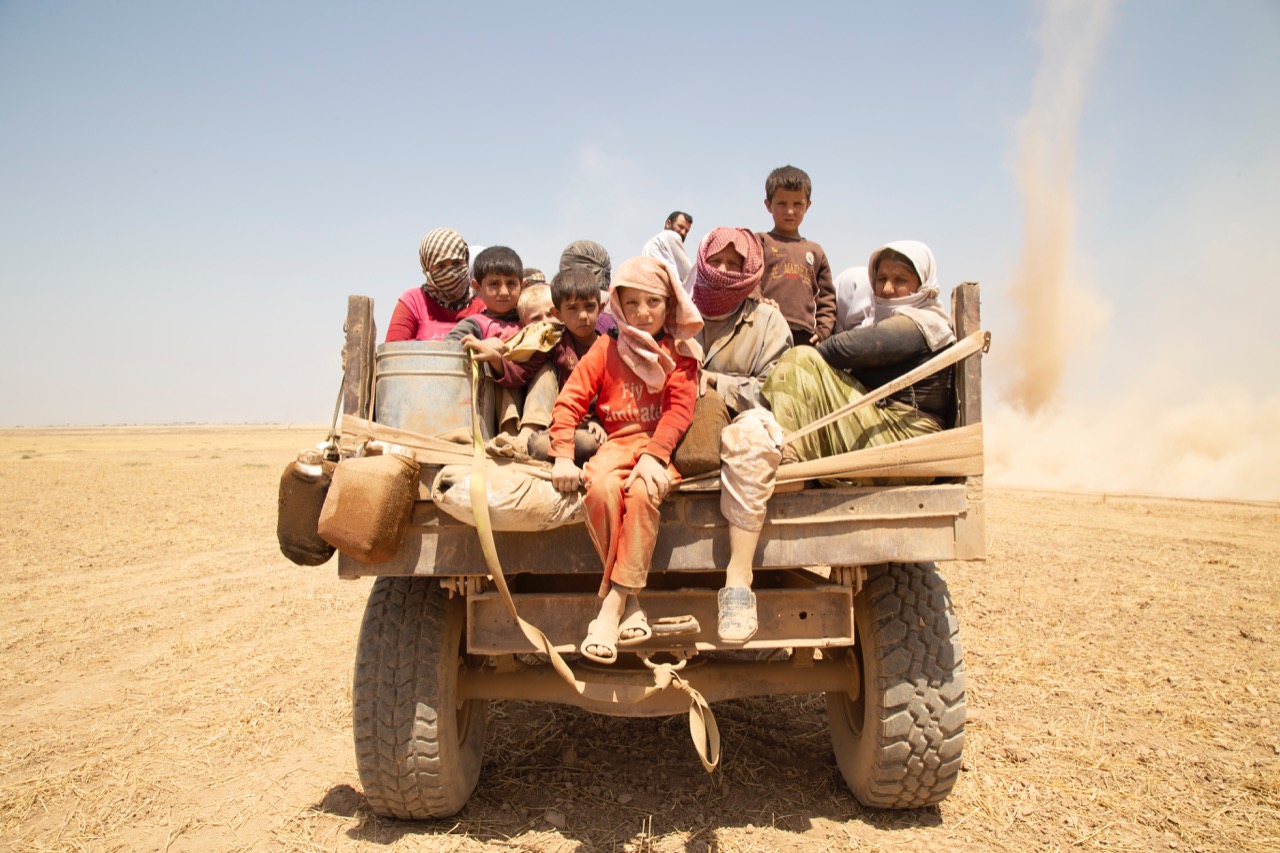The exhibition title alludes to the legendary Scheherazade, narrator of The Thousand and One Nights. An Iranian princess trapped in a fated marriage, Scheherazade’s husband King Shahryar had vowed that he will execute a new bride every morning. So, for 1,001 nights, Scheherazade tells her husband a story, stopping at dawn with a cliffhanger, forcing him to keep her alive for another day.

Sequins and beads, thread and cloth, hand embroidered
30.5 x 20.5 x 2 cm, 12 x 8 1/8 x 3/4 in
The flip side of the 80s glitz -the spectre of HIV and AIDS- haunted that decade and the early 90s. Haring was himself a casualty, but not before using his fame and brand recognition to bring attention to the epidemic. Diana, meanwhile, was the first high profile individual to bridge and go beyond what was a taboo and to humanize the epidemic. By using her hands, providing a sense of touch, she normalized the process of how to handle a person suffering from HIV.

No. 3 
No. 6 
No. 7
Digital print using water based pigment ink, on half Panama cotton canvas, hand embroidery using silk, cotton, metallic thread, safety pins and embellishments
125 x 98 x 2 cm, 49 1/4 x 38 5/8 x 3/4 in
For And God Saved the Queen, Farhad uses press images of Diana wearing her famous outfits, cropping the image to eliminate her face, instead focusing on her bold choice of blazer or dress, which in turn are embroidered with designs drawn from artworks of Keith Haring. It is so obviously Diana, that one does not need to even see her face to know exactly who it is. Likewise, the designs are obviously Haring’s.

Variety of local wood indigenous to Pars region, Iran
52 x 37.5 x 2.6 cm, 20 1/2 x 14 3/4 x 1 in
In Touch, Composition with Left Hand, hands in different shades of wood taken from different kinds of tree, are superimposed on each other. Smaller wood inlaid works focus on individual fingers and thumbs, which appear to be cut, alluding to the cropping we see on the And God Saved the Queen.

No. 1 
No. 4 
No. 2
Sermeh-doozi, Sermeh-embroidery, imitation gold and silver threads, decorative pearls
78 x 78 x 2 cm, 30 3/4 x 30 3/4 x 3/4 in
Like A Prayer uses an intricate Iranian fabric, Termeh, ترمه, with Haring-inspired embroidered motifs, [using the ancient technique of Sermeh Embroidery, سرمه دوزی]- surreally deformed bodies and references to cutting, alludes to the 1989 track by Madonna, one of the singer’s most iconic, if controversial, singles.
Farhad Ahrarnia’s long standing interest in Saqqakhaneh, Constructivism and Surrealism come to the fore in a highly detailed, hand made and scrutinising body of work which touches, cuts and taps deeply into the collective memories of our times.

About the artist
Farhad Ahrarnia (b. 1971, Shiraz, Iran) holds a degree in Experimental and Documentary Film Theory and Practice from the Northern Media School, Sheffield Hallam University, UK.
Select solo shows include Twisting The Modern, Lawrie Shabibi, Dubai, 2019; Art in Another Language, Galerie Janine Rubeiz, Beirut, 2019; Something for the Touts, the Nuns, the Grocery Clerks and You, Lawrie Shabibi, Dubai, 2017; Manouchehri Merchant House, Kashan, 2016; A Dish Fit for the Gods, Lawrie Shabibi, Dubai, 2015; Stage on Fire, Rose Issa Projects, London, 2014; Canary in a Coal Mine, Rose Issa Projects, London, 2014 and Stitched, Leighton House Museum in collaboration with Rose Issa Projects, London, 2008.
Ahrarnia has participated in several group shows including: Seeing Is Believing: The Art and Influence of Gérôme, Mathaf: Arab Museum of Modern Art, Doha, Qatar; The Human Image: Art, Identities and Symbolism, CaixaForum, Seville, Spain, 2022; Punk Orientalism, Mackenzie Art Gallery, Regina, 2019; Recentring Modernism, Insights sector, Art Basel Hong Kong with Lawrie Shabibi, 2016; Serpentiform, Museo di Roma, 2016; Open Your Eyes, Rose Issa Projects, London, 2014; Embroideremania, Hinterland Kunzt Art for Vienna Art Week, 2013; Bringing the War Home, Winchester School of Art, 2013; The Beginning of Thinking is Geometric, Maraya Art Centre and the Barjeel Art Foundation, Sharjah, 2013; #COMETOGETHER, Edge of Arabia, London, 2012 and Migrasophia, Maraya Contemporary Art Centre, Sharjah, 2012.
He has previously participated in The Great Game, Iranian Pavilion, 56th Venice Biennale, Venice, 2015; the 6th Tashkent Biennale of Contemporary Art, 2011; the Sheffield Pavilion at the 52nd Venice Biennale, 2007 and Documenta XII, Kassel, Germany, 2007.
His work is in several collections including the Los Angeles County Museum of Art, (LACMA); Art Gallery of Western Australia, Perth; the British Museum, London; Cartwright Hall Art Gallery, Bradford; Harewood House, Leeds; The Mohammed Afkami Collection, Dubai and the Huma Kabakci Collection, Istanbul; The Farjam Foundation, Dubai, The Victoria and Albert Museum, London.
Ahrarnia lives and works between Shiraz and Sheffield.



